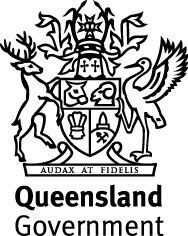
Queensland Workplace Health and Safety recently reported that in October 2017, a tree lopper was hit by a branch cut by another worker in an elevating working platform approximately 8-10 metres above him. The worker was wearing a helmet and was struck in the head, fracturing his skull. He was admitted to hospital in a serious condition.
Initial inquiries indicate that exclusion zones were not maintained for workers performing activities below trees being cut.
Preventing Similar Incidents this Storm Season
Before starting tree lopping, cutting or pruning work, a thorough risk assessment of both the work site and the tree must be undertaken. Hazards usually include:
- falls from height
- being hit by falling objects
- uneven or sloping ground (when using EWP’s)
- overhead powerlines
- weather
- wildlife
Risks associated with falls from height and being hit by falling objects must be controlled by ensuring:
- safe systems of work are in place that address site specific hazards
- workers are provided with suitable equipment for the task
- workers are given relevant information and instructions, and are trained and competent to perform the tasks.
Using an EWP for tree-lopping is an accepted practice. The EWP reduces worker fatigue, and provides a stable platform for work to be performed. While cutting trees or branches, exclusion zones must be established to ensure that workers or others below the EWP are not struck by falling branches. Consideration must also be given to plant stability on uneven or sloping ground and contact with overhead power lines.
PCBU’s should also ensure that:
- workers adhere to established exclusion zones
- no work is carried out above workers or others
- workers have suitable means of communication – radio, hand signals etc.
- workers are provided with appropriate protective equipment including helmets or hard hats
- spotters or worksite controllers are used to manage movement of plant and personnel on site, and to ensure that exclusion zones are adhered to while overhead work is being performed.
Statistics
Since 2012, WH&S has responded to 51 events involving tree trimming or removal that resulted in either a fatality or serious injury requiring immediate hospital treatment. 38 enforcement notices were issued including 17 prohibition notices and 21 improvement notices. WH&S were notified of a further two incidents involving contact with overhead power lines, one of which resulted in a death.
Since 2011, a total of 88 workers’ compensation claims have been accepted for injuries associated with being hit by falling objects while performing tree cutting or removal. Reported injuries include head, face and eye injuries, lacerations, soft tissue damage, being crushed by falling branches, broken arms, hands, legs and feet, broken ribs and collar bones.
Prosecutions and compliance
In June 2017, a company was fined $80,000 following the death of a home occupier who engaged the defendant to cut down eight trees in his backyard. To save costs, the home occupier and other family members were assisting on the ground while the defendant cut the trees. The home occupier was killed when he was struck and crushed by a falling section of the tree trunk and branches.
More information
Managing Risks of Tree Trimming and Removal Work
Tree Trimming – Hazard Identification Checklist (PDF, 153.84 KB)